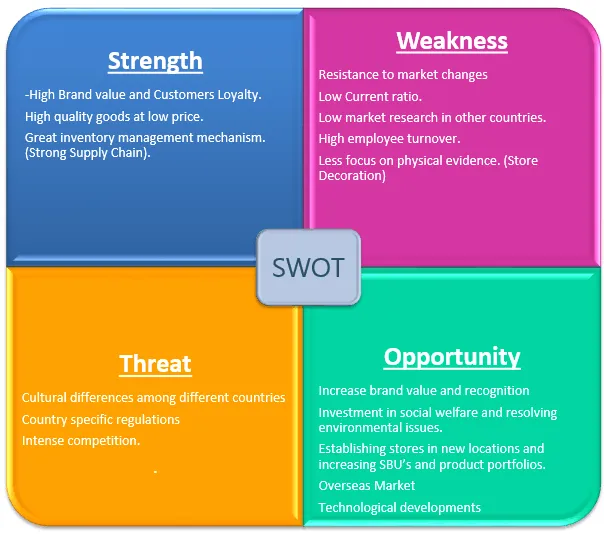Wal-Mart Stores, Inc. - Case Solution
"Wal-Mart Stores, Inc." case study describes the development and growth of the company over the years. It discusses the move of the company to engage in other business industries. This case study seeks to answer whether the company has been able to sustain its competitive advantage and superior performance in comparison to its competitors.
Case Questions Answered
- Has Wal-Mart Stores, Inc. been able to sustain its competitive advantage and superior performance, as explained in the case?
- How can Wal-Mart continue to sustain its superior performance?
Case Facts – Wal-Mart Stores, Inc.
Wal-Mart Stores, Inc. was founded by Sam Walton in 1962. It operates in 16 countries globally. It had the largest market share of the total global retail market. It had the largest global corporation by revenue.
It is considered the largest private employer in the world. It is included among the major players in its industry, along with Kmart and Target.
Major parts of Wal-Mart Stores, Inc. corporate strategy as per the case
- Creation of positive brand and company recognition
- Dominance in the retail market
- Expansion in the US and international markets
- Branch out into new sectors of retail.
SWOT Analysis

Porters Five Force Analysis
The Threat of Competitive Rivalry is high.
Wal-Mart Stores, Inc. faces huge competition. There are high exit barriers due to the huge inventory. The switching cost of buyers is low. And it has a high market share in a low-growth industry.
The Threat of New Entrants is Low
New entrants would be reluctant to enter the industry because this industry is already saturated, and to fight the already existing competitors and penetrate the market is difficult. It requires a high capital requirement, and it is hard to build a distribution network.
The Threat of Substitutes is Medium
The switching cost of customers for Wal-Mart Stores, Inc. is low. Many substitutes with similar performance are available in the market, and the competitive pricing for products of similar quality.
The Bargaining Power of Customers is High
Customers are now more aware and have the resources to search for the best deal possible. Their switching cost in the retail industry is also negligible.
The Bargaining power of Suppliers is Low to Medium.
Cordial trust relationship with suppliers is…
Complete Case Solution
Get immediate access to the full, detailed analysis
- Comprehensive answers to all case questions
- Detailed analysis with supporting evidence
- Instant digital delivery (PDF format)
Secure payment • Instant access
By clicking, you agree to our Terms of Use, Arbitration and Class Action Waiver Agreement and Privacy Policy